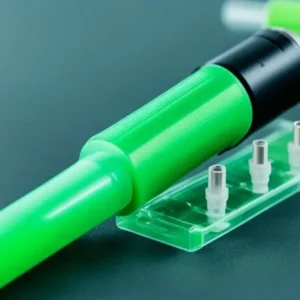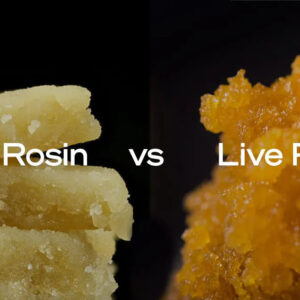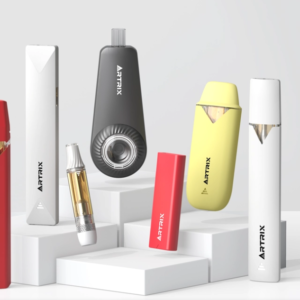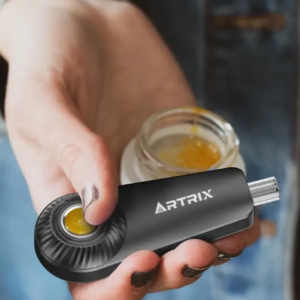A new look at the importance of the newly discovered cannabinoids THCP (tetrahydrocannabiphorol) and CBDP (cannabidiphorol), as well as how the finding may influence the cannabis industry in 2021 and beyond.
Cannabinoids, THCP & CBDP, recently discovered, might be the next big thing in cannabis industry.
Scientists in Italy recently identified two new cannabinoids named THCP and CBDP, as Crested River readers are aware. The molecules are physically identical to THC and CBD, the two most widely used cannabis components, but they are 30 times more powerful.
Hundreds of cannabinoids have been discovered in the cannabis plant throughout the decades by scientists. Of course, you’ve heard of THC and CBD, the two most well-known cannabinoids. When we reported that scientists had discovered two new cannabinoids, THCP and CBDP, that might be 30 times stronger than THC, the cannabis industry’s subculture went insane, with hundreds of individuals scouring the ground-breaking study and discovery.
Late in December, Italian researchers revealed their findings. The cannabis community has been stunned by the news. To put it bluntly, the discovery of these cannabinoids shocked the cannabis world since it raised the potential of a more powerful marijuana high possibly becoming a reality.
Since our first storey made waves, Shawn, Crested River CEO, has said that the discovery of THCP and CBDP “show how much more we have to learn from researching marijuana,” while Futurism.com called it a “newly found cannabis molecule [that] is 30 times more powerful than THC.”
Now that we’ve had some time to reflect on our first findings, let’s go deeper into THC, THCP, CBD, and CBDP. Have scientists discovered new and better THC and CBD strains? Will we ever ingest marijuana that is 30 times more powerful than what we have now? Continue reading to learn more about this finding.
Italian scientists are working on a project. Learn about THCP and CBDP.
To summarise, let’s pick up where we left off last time and start with the study. Researchers in Italy published the results of their investigation in Scientific Reports on December 30, 2019.
“A new phytocannabinoid derived from Cannabis sativa L. with an in vivo cannabimimetic activity greater than 9-tetrahydrocannabinol: 9-Tetrahydrocannabiphorol,” according to the study.
While it is a mouthful and necessitates the use of a pharmacology dictionary to comprehend on the surface, a more digestible translation of the cannabis study’s title into non-scientific words might be: “We found new marijuana chemicals that are stronger than THC and CBD.”
Researchers employed liquid chromatography combined with high-resolution mass spectrometry to understand more about the chemical structure of the cannabis plant and to determine the explanation for marijuana’s advantages.
The same Italian study team used a similar method to uncover two previously undiscovered cannabinoids, CBDB and THCB, last year.
Scientists discovered two novel chemicals as a result of their testing, which they named:
- Tetrahydrocannabiphorol (THCP)
- Cannabidiphorol (CBDP)
These names were taken from the conventional phytocannabinoids naming scheme, which is based on the resorcinyl residue.
Then, scientists put THCP and CBDP to the test on mice, which is when things started to get interesting.
THCP was 30 times as potent than THC when tested on mice
The scientists ran five experiments on mice and evaluated the results. To examine the effects of THCP, mice were subjected to a tetrad test, body temperature test, open field test, bar test, and hot plate test.
The tetrad of behavioural tests on mice was used to determine the cannabinoid activity of THCP, according to the study’s authors.
“The tetrad consists of assessing spontaneous activity, immobility index [catalepsy] analgesia, and rectal temperature changes.”
Researchers were essentially putting these animals to the test to determine what physiological consequences THCP consumption may induce. The physiological effects of cannabinoid action include a decrease in locomotor activity and pain reduction (analgesia).
What did scientists come up with?
Intake of THCP, for example, “markedly decreased spontaneous activity of mice in the open field” while boosting other marijuana “highness” measures.
To put it another way, THCP seems to get mice euphoric more efficiently than THC. In fact, when comparing THC to THCP, the measures were roughly 30 times more potent. If these findings are confirmed in humans, THCP might get you 30 times as high — with the same dosage – as THC alone.
Researchers predict THCP to have “an even higher binding affinity for CB1 receptor [in the brain] and stronger cannabimimetic action than THC itself,” according to the study.
CBDP’s mechanism of action is still unknown. CBD, on the other hand, has a low affinity for CB1 and CB2 receptors. CBDP may give similar advantages as CBD, but at a much higher potency, if it has a higher binding affinity for those same receptors.
The same Italian study group found CBDB and THCB last year and studied the advantages of the newly discovered cannabinoids. THCB reduced pain in rats, according to researchers, however further study is needed to confirm the advantages.
More study is also required to confirm the advantages of THCP and CBDP. Early results are promising, but we still have a long way to go before we can be sure of them.
A New Rivalry Between THC and THCP?
THCP was found recently by Italian researchers. However, THCP might be the new and better form of the popular cannabinoid, according to their research from late December 2019.
THCP appears to be a more efficient and powerful version of THC, based on the limited studies so far. It’s more quickly absorbed by your body and binds to CB1 receptors more efficiently.
At least in mice, researchers observed that THCP was 30 times more potent than THC.
THCP, like any other cannabinoid, may be bred into cannabis strains to enhance the cannabinoid’s content. It’s likely that in the near future, producers may prioritise high THCP strains for “maximum highness.”
Of course, further study is needed to confirm these advantages.
Is CBDP a better version of CBD with better absorption than CBD?
Could CBD and CBDP be on the verge of establishing a rivalry? It’s a distinct possibility. For the most recent trial, researchers mostly tested THCP, and it’s unclear what impact CBDP will have on CBD benefits, if any.
However, one of the most intriguing areas for advancement is CBDP’s ability to bind to CB1 and CB2 receptors. CBD has a low affinity for CB1 and CB2 receptors, which makes it difficult for your body to absorb it and reap the advantages of CBD, such as pain reduction. CBDP may rapidly become the next big thing in cannabis if it offers the same advantages as CBD but with greater biosorption.
All of this is just speculation at this moment. Last week, scientists reported the discovery of THCP and CBDP. Nobody knows what will happen next.
While it will consume longer time than any high-THC or high-CBD advocates wish for in terms of when a consumable or smokable product will hit the market (if ever), as Vice and many others have reported, we are still in the early stages of understanding all of cannabis’ medicinal values, as much more scientific research and medical analysis must be conducted and submitted before we can make any conclusions. As the cannabis business develops and grows, it will undoubtedly be an exciting and exciting trip into the depths of where the diverse cannabis plant can lead us in 2020 and beyond.





